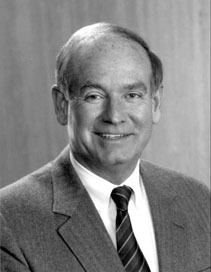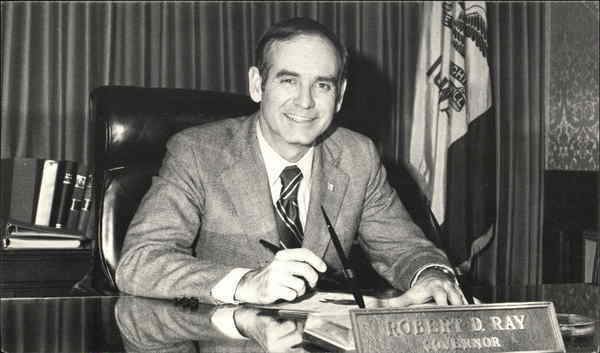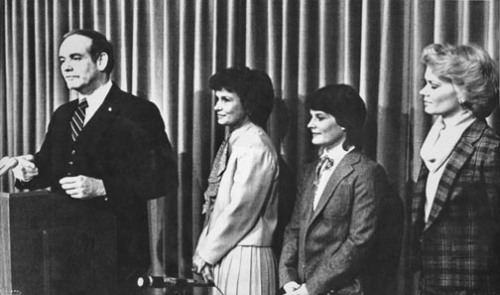Name Robert Ray | Spouse Billie Ray | |
 | ||
Lieutenant Roger JepsenArthur A. NeuTerry E. Branstad Alma mater Drake University (BA, JD) | ||
Robert d ray an iowa legacy
Robert Dolph Ray (born September 26, 1928) is a retired American politician and academic administrator who served as the 38th Governor of Iowa from January 16, 1969 to January 14, 1983.
Contents
- Robert d ray an iowa legacy
- Robert D Ray
- Early life and career
- Governor of Iowa 19691983
- Southeast Asian refugees
- Iowa burials protection law
- References

Robert D. Ray
Early life and career

He served in the United States Army. He received his B.A. in Business from Drake University in 1952 and his Law Degree in 1954. Following several years practicing law, Ray became Chair of the Iowa Republican Party and is credited with rebuilding it following the heavy Republican losses incurred in 1964 when Barry Goldwater headed the national Republican ticket.
Governor of Iowa (1969–1983)

During Ray's time in office, the Iowa Constitution was modified, increasing the Governor's term of office from two years to four years. Ray served as Chair of the National Governors Association from 1975 to 1976. He also served as Chairman of the Republican Governors Association, the Midwestern Governors Association, the Education Commission of the States and was the president of the Council of State Governments. As Governor, Ray issued executive orders promoting civil rights, energy conservation, and paperwork reduction as well as establishing the Governor's Economy Committee, the Iowa Council for Children, the Task Force on Government Ethics, the Science Advisory Council, and the Iowa High Technology Commission. Ray signed legislation establishing the Iowa Commission on the Status of Women in 1974. In 1982, that commission named him the first recipient of the Cristine Wilson Medal for Equality and Justice. In 1976, Ray, along with his wife Billie Ray and three daughters, became the first Governor of Iowa to occupy Terrace Hill, the official Governor's mansion.

Ray served as a delegate to the United Nations Conference on Refugees in Geneva, Switzerland in 1979. Beginning in 1975, his administration encouraged Iowans to assist in the settlement of southeast Asian refugees in the state, including Vietnamese Tai Dam and Laotian Hmong refugees. He was an advocate of the nickel deposit on aluminum cans. A popular governor during his fourteen-year administration, he has continued to be extremely active in public affairs in Iowa since leaving the governorship, serving as interim Mayor of the City of Des Moines, President of Drake University, and leading several statewide educational awareness efforts and fundraising campaigns. In 1997, he helped form the Institute for Character Development at Drake University. In 2005, Ray became the only Governor or former Governor to have received Iowa's highest civilian honor, the Iowa Award, by the Iowa Centennial Memorial Commission. Ray is Co-Chair, along with Bob Edgar, of the bipartisan National Coalition on Health Care.
Southeast Asian refugees

Ray's greatest legacy is his humanitarianism on behalf of Southeast Asian refugees. The Tai Dam are an ethnic minority from northwest Vietnam. The group had a long history of fighting communism in Southeast Asia, and they faced persecution as communist governments overran Vietnam and then Laos. Through American educator Arthur Crisfield, the Tai Dam wrote letters to thirty U.S. governors in the hopes of finding asylum. Only Ray agreed to bring the group to the United States by creating his own refugee resettlement program. Within two years, over 1,200 Tai Dam would call Iowa home. As communism gained a stronger foothold in Vietnam in the late 1970s, thousands still faced persecution for connections to U.S. military and political interests. Many Vietnamese fled in small and often unseaworthy vessels. These "boat people" faced drowning, disease, rape, and murder on their perilous journeys out of communist Vietnam. Watching Ed Bradley's compelling 60 Minutes documentary propelled Ray to action. He announced the state of Iowa would accept 1,500 additional refugees in January of 1979, and Ray wrote letters to President Carter and other governors asking them to support greater admissions of boat people. While visiting a Cambodian refugee camp later that year, Ray witnessed people die. After returning to America, he gave a moving testimonial at a church in St Louis, and then launched the creation of Iowa SHARES during the 1979 holiday season. SHARES stood for sends help to aid refugees and end starvation. With special aide Kenneth Quinn's assistance, the Governor's Office raised over a half a million dollars. Proceeds were used to send food, medicine, and Iowa doctors and nurses to Cambodian refugees in Thailand and Cambodia. Opinion polls from the period demonstrated Ray's refugee resettlement and relief efforts were very controversial. Many feared competition for jobs, diversion of funds from needy native Iowans, and racial mixing. Today, Ray is revered by Iowa's Southeast Asian American community and many other Iowans for his work with refugees while governor.
Iowa burials protection law
Part of Gov. Ray's legacy is the enactment of the first laws in the U.S. that protected American Indian graves. In the early 1970s Maria Pearson was appalled that the skeletal remains of American Indians were treated differently from white remains. Her husband, an engineer with the Iowa Department of Transportation, told her that both American Indian and white remains were uncovered during road construction in Glenwood, Iowa. While the remains of 26 white burials were quickly reburied, the remains of an American Indian mother and her child were sent to a lab for study instead. Pearson protested to Gov. Ray, finally gaining an audience with him after sitting outside his office in traditional attire. When Ray asked Pearson what he could do for her, she replied, "You can give me back my people's bones and you can quit digging them up." Ray cooperated with Pearson, and their work led to the passage of the Iowa Burials Protection Act of 1976, the first legislative act in the U.S. that specifically protected American Indian remains. This act was the predecessor of the federal Native American Graves Protection and Repatriation Act.
http://iowapublicradio.org/post/good-governor-robert-ray-and-indochinese-refugees-iowa#stream/0
https://www.amazon.com/Good-Governor-Robert-Indochinese-Refugees/dp/1476669473
http://www.jonbowermaster.com/governor.php
